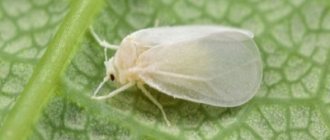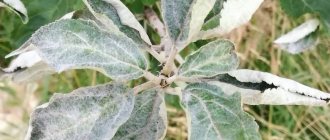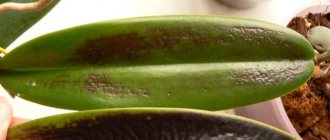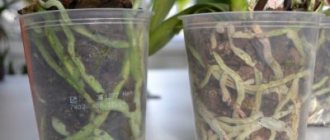All diseases and pests of roses are well known to avid gardeners. And for a novice summer resident, the information provided on this page will be of enormous value. After all, rose diseases and the fight against them affect everyone without exception, since the culture is very susceptible to them. The most common diseases of roses are infectious burn, spotting, gray rot and powdery mildew. And the most important pests of roses are aphids, leaf rollers, rose sawfly and caterpillars. You can find out everything you need to know about pest control and rose diseases on this page.
Here it is proposed to start by looking at the main diseases and pests of roses in the photo, from which you can easily recognize the problem.
The accuracy of the symptom mapping can then be identified using the rose disease description. Well, after all this, all that remains is to choose the appropriate control agents that can be used to treat the plants.
How to treat roses to combat spider mites
Spider mites on roses (photo)
Spider mites are especially dangerous for roses in dry, hot summers. The optimal conditions for its development are temperatures of +29…+31 °C with air humidity below 35%. Under such conditions, the number of ticks increases rapidly, because every 10-15 days a new generation of the pest appears. Mites suck out the cell sap from the leaves, as a result of which small light spots (pricks) appear on them, the leaves turn yellow, dry out and fall off.
The most effective in the fight against spider mites are Iskra-M and Fufanon. Spraying roses in the presence of a mite must be repeated after 10-12 days until its harmfulness decreases. How else can you treat roses against spider mites to get rid of this pest? At temperatures above +22 °C, colloidal sulfur or “Tiovit Jet” can be used. These drugs inhibit the reproduction of ticks.
Treatment of roses, as well as other plants, should be carried out in the evening or morning hours. If simultaneous protection against diseases and pests is necessary, all recommended insecticides can be mixed with fungicides immediately before spraying, except Bordeaux mixture.
Look at the photo of this rose pest and measures to combat it:
Black spot (lat. Marssonina)
Caused by the fungus Marssonina rosae, when it gets on a plant it affects the leaf blade, flower petals and sepals. The spores are carried by water droplets and black spotting develops in July and August.
How to recognize the disease
Small dark spots appear on diseased plants, which quickly increase in diameter to 15 mm. Conidia with fungal spores form on them. Leaves fall in sequence from top to bottom. The rose weakens and gradually dies.
Black spot almost completely destroys leaves
Black spot on roses treatment and prevention measures
- Leaves and shoots affected by black spot are cut off; they cannot be sent to compost, so they are burned;
- Diseased roses are treated with fungicides containing copper and zinc (“Fundazol”, “Kaptan”);
- In the fall, before covering the plants for the winter, they are sprayed with 3% copper or iron sulfate.
Leaf-cutter bee rose pest: photos and control measures
On the leaves of roses and rose hips at the end of June-July you can see regularly cut oval or completely round holes.
Rose pest leafcutter bee in the photo
This is the job of the leafcutter bee, which uses them to build its nest. Having chosen a suitable ready-made cavity - an abandoned bee burrow, a barbel burrow or an earthworm burrow, the bee begins to stuff it with carelessly cut pieces of rough leaves of oak, grape, or hawthorn. This plug serves to protect the nest.
After the cork is made, the bee begins to cut out oval pieces of the more delicate leaves of roses, lilacs, acacias, and rose hips. Sitting on the sheet, she carefully “cuts” it, like scissors, starting from the edge and gradually turning in a circle. First, the outer layer of the cell is made from large leaves, covering about a third of the circumference of the channel, so that the individual pieces overlap each other, and their lower ends are folded in, forming the bottom of the cell. After this, the builder closes the gaps remaining between the first pieces with smaller pieces of leaves and thickens the walls.
As you can see in the photo, this rose pest, in order to seal a cell filled with food, cuts out completely round pieces of leaves:
In this case, the diameter of the first of them is exactly equal to the diameter of the cell, and the subsequent ones are cut out large and turn out to be concave inward, forming the bottom of the next cell. The first cell is followed by the second and so on. The largest nest of a leafcutter bee has up to 17 cells. In total, it takes more than 1,000 pieces of leaves to build the nest, including the plug.
The finished nest of a leaf-cutter bee is a long cylinder that easily breaks down into individual cells. The leaves from which each one is made are easy to disassemble. Later, this is more difficult to do, since, when pupating, the larva releases a sticky liquid into the spaces between the pieces of leaves, which, when solidified, holds them together.
You can protect roses from this bee by spraying the plants in the late evening with one of the systemic preparations that destroy aphids and other pests.
Try proven insect repellents (including aphids):











